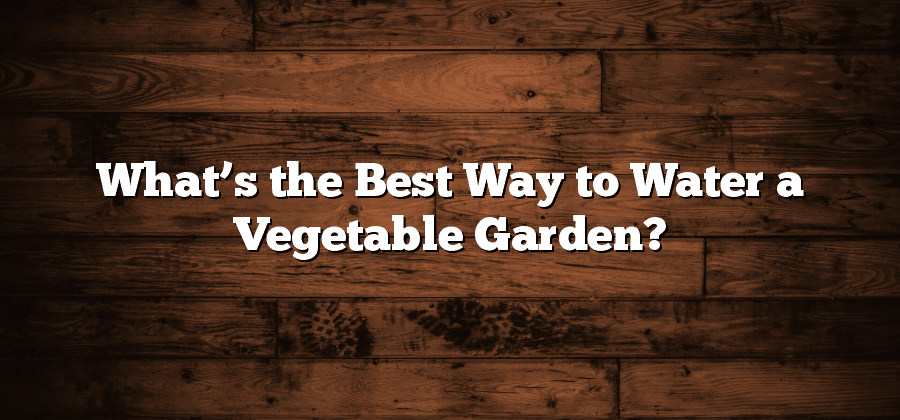Watering Schedule for Optimal Vegetable Growth
One of the essential factors for promoting optimal vegetable growth is maintaining a consistent watering schedule. Proper watering is crucial for ensuring that vegetables receive the right amount of moisture to thrive. However, it is important to understand that the watering needs may vary between different types of vegetables, soil types, and environmental conditions.
To determine the right watering schedule for your vegetable garden, consider factors such as the weather, soil type, and the specific water requirements of the vegetables you are growing. In general, vegetables need about 1-2 inches of water per week. However, this can fluctuate depending on factors like temperature, rainfall, and humidity levels. It is recommended to monitor the soil moisture levels regularly to accurately assess when watering is necessary. This can be done by using a moisture meter or simply checking the soil’s moisture level with your finger.
Determining the Right Amount of Water
Determining the right amount of water for your vegetable garden is crucial for ensuring optimal growth and productivity. However, it can be a bit challenging to strike the perfect balance between underwatering and overwatering. Providing too little water can lead to stunted growth and poor harvest, while excessive watering can result in root rot and nutrient leaching.
To determine the correct amount of water, it is important to take into consideration factors such as plant requirements, weather conditions, and soil type. Different types of vegetables have varying water needs, so you should consult specific guidelines or seek advice from local horticulturists. Additionally, keep in mind that the water requirements of your garden can change throughout the growing season. During hot and dry periods, plants generally need more water to compensate for increased evaporation. Conversely, cooler and more humid conditions might call for less frequent watering. Regularly monitoring weather forecasts and observing the appearance of your plants can help you gauge their water needs accurately.
Understanding Soil Moisture Levels
Soil moisture levels play a crucial role in the growth and development of vegetables. The amount of water present in the soil directly affects the health and productivity of the plants. It is essential for gardeners to understand and monitor soil moisture levels to ensure optimal growth.
One way to determine soil moisture levels is by performing a simple test. Take a handful of soil and squeeze it in your hand. If the soil sticks together and forms a solid ball, it indicates that the moisture level is high. On the other hand, if the soil crumbles immediately after releasing the pressure, it suggests that the soil is too dry. By performing this test regularly in different areas of the garden, you can get an idea of the moisture distribution and adjust your watering schedule accordingly. Monitoring soil moisture levels is a vital step in maintaining a healthy vegetable garden and maximizing the yield.
Choosing the Ideal Time to Water
One of the most important factors to consider in your watering schedule is choosing the ideal time to water your vegetable garden. Timing is crucial, as watering at the right time can maximize water absorption and minimize water loss through evaporation.
In general, it is best to water your vegetables early in the morning or late in the evening. During these times, temperatures are cooler, and there is less wind, allowing the water to penetrate the soil properly and reach the plant roots. This is especially important in hot climates where watering during the day can lead to rapid evaporation and inadequate moisture retention in the soil. By watering in the cooler parts of the day, you provide your vegetables with the opportunity to absorb the water they need to thrive.
Exploring Different Watering Methods
Drip irrigation, one of the most efficient watering methods, involves delivering water directly to the plant’s root zone. This method utilizes a network of tubing and emitters that release water slowly and consistently. Drip irrigation not only conserves water by reducing evaporation and runoff but also promotes healthier plants by preventing water stress and minimizing weed growth. It is particularly advantageous for vegetable gardens as it avoids wetting the foliage, reducing the risk of diseases caused by fungal infections.
Another effective watering method for vegetables is soaker hoses. These hoses are built with tiny pores that allow water to seep out evenly along their length. When placed near the plants’ base and covered with mulch, soaker hoses deliver water directly to the root zone, ensuring efficient water absorption. Soaker hoses are convenient to use, especially in large garden areas, as they can be easily connected and adjusted according to the watering needs of different plants. Moreover, this method reduces water waste by keeping the surrounding soil dry, preventing weed growth, and minimizing evaporation.






